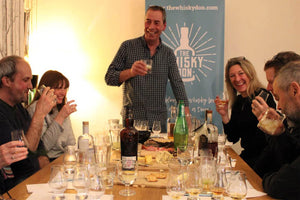Let’s talk about… different types of Irish whiskey
There are four main types of whiskey in Ireland (plus a fifth catch-all option). These types of whiskey are defined either by the grains used in the mashbill or the style of distillation that they employ. So, what are they?
1. Malt Irish whiskey
e.g. Bushmills 10 year old, 40% ABV
This type of Irish whiskey is made from 100% malted barley, water, and yeast. It must be distilled in copper pot stills.
Bushmills 10 year old is probably one of the most famous single malts from Ireland. Made using 100% malted barley, it goes through milling, mashing, fermentation and then the triple distillation process.
2. Grain Irish whiskey
e.g. Teeling Single Grain, 46% ABV
Grain Irish whiskey must be made with malted barley (not exceeding 30% of the mashbill) and includes unmalted cereals such as maize/corn, wheat or barley. It must be distilled in a column still.
Teeling single grain Irish whiskey is distilled with corn, put through a column still, is triple distilled and has a high percent Alcohol By Volume (ABV).
3. Pot still Irish whiskey
e.g. Redbreast 12 year old, 40% ABV
Pot still Irish whiskey must contain both malted and unmalted barley (and may contain other unmalted cereals) as well as water and yeast. It must be distilled in copper pot stills.
Redbreast 12 year old contains 50% malted barley and 50% unmalted barley, which is known as a 50/50 mashbill. It is distilled three times and matured in a combination of bourbon and sherry casks simultaneously before being married together and bottled.
4. Blended Irish whiskey
e.g. The Whistler Double Oaked, 40% ABV
Blended Irish whiskey simply refers to a whiskey made from a mixture – that is, a blend – of two or more different types of Irish whiskey. That covers any combination of malt, grain and pot still whiskey. Blends, therefore, can be distilled in a pot still and/or a column still depending on the categories used. Globally, blended is the most popular category of Irish whiskey today.
The Whistler Double Oaked blend is known as an 80:20 blend. That means 80% of it started life as a single grain while the other 20% of the volume started as a single malt.
+ ‘Irish whiskey’
There is also a fifth, generic classification called Irish whiskey which is designed as a catch all for those whiskeys which do not naturally fall within one of the four main types.









